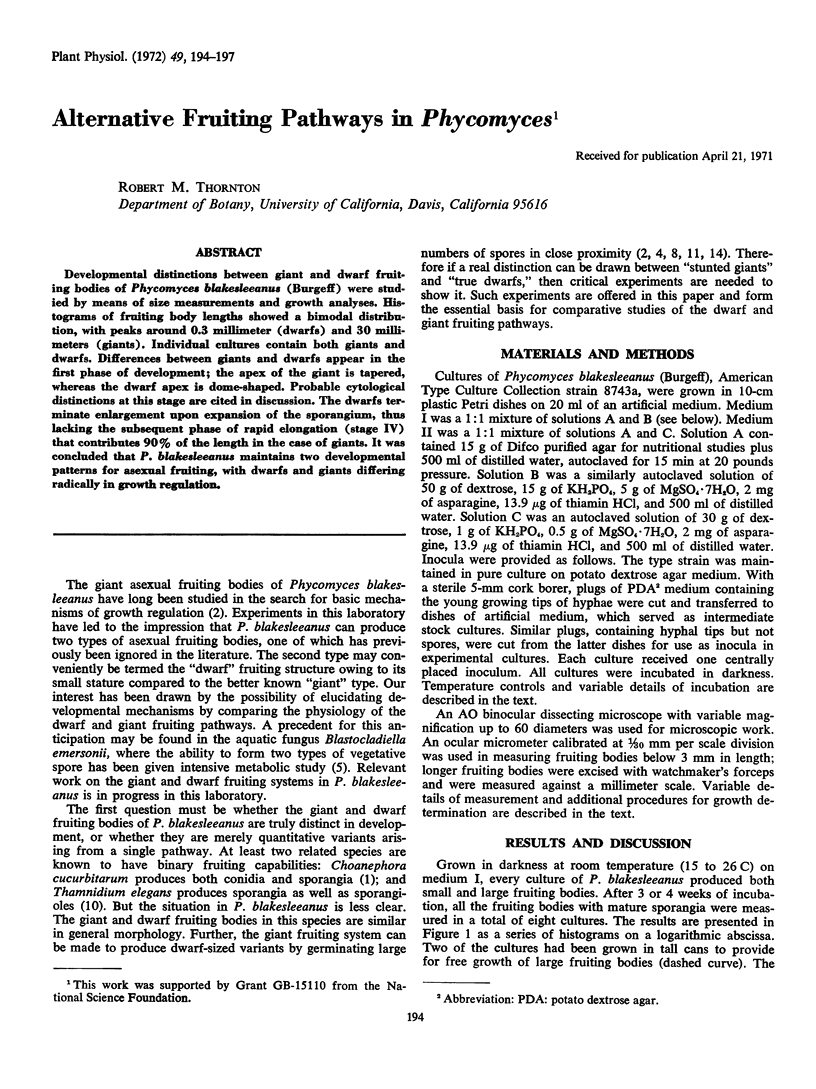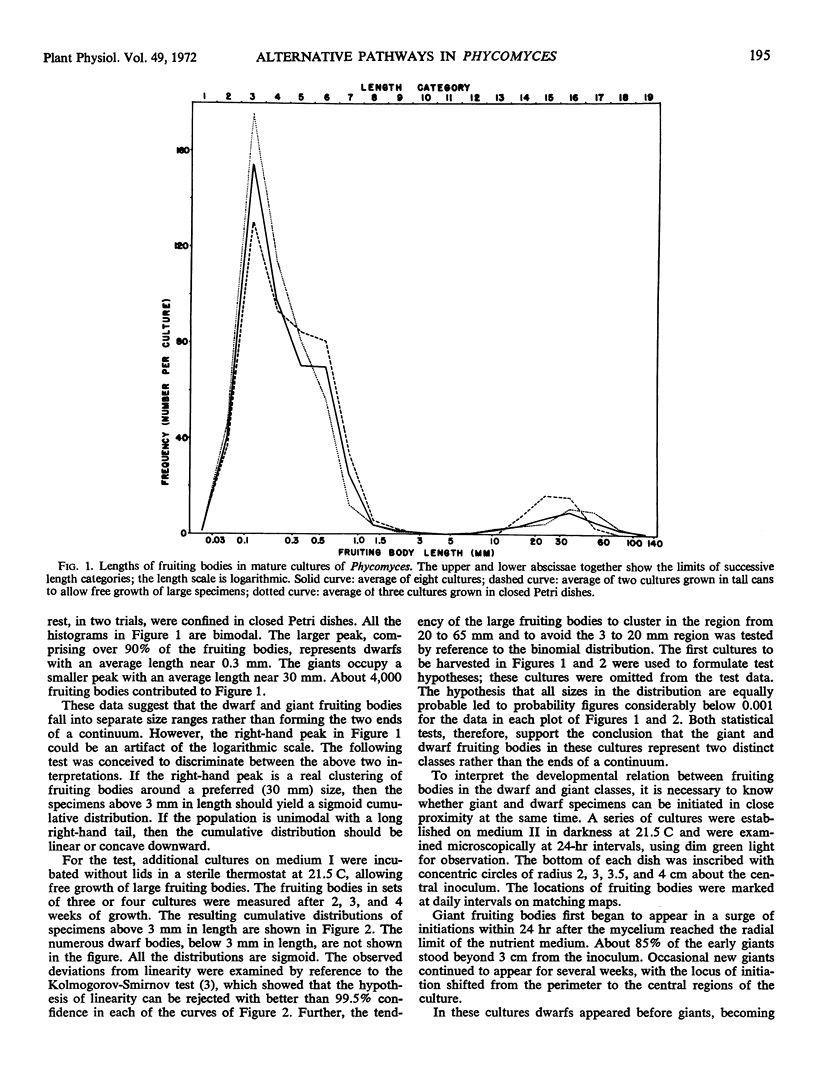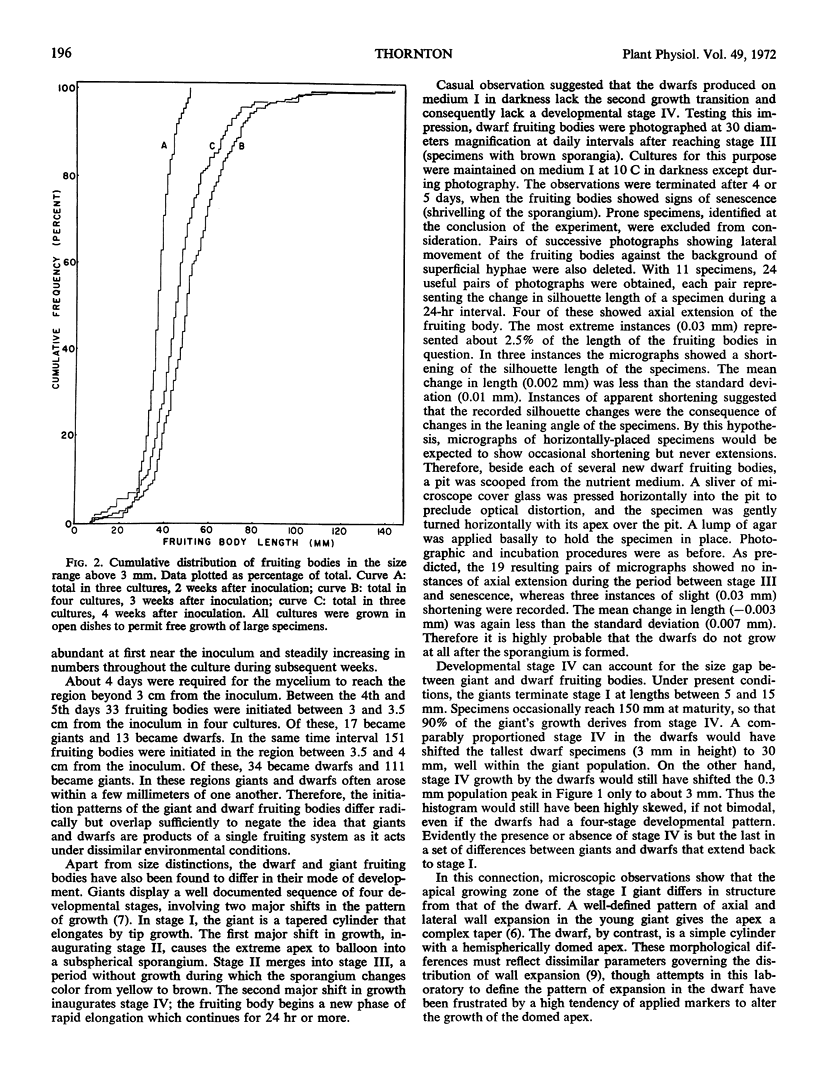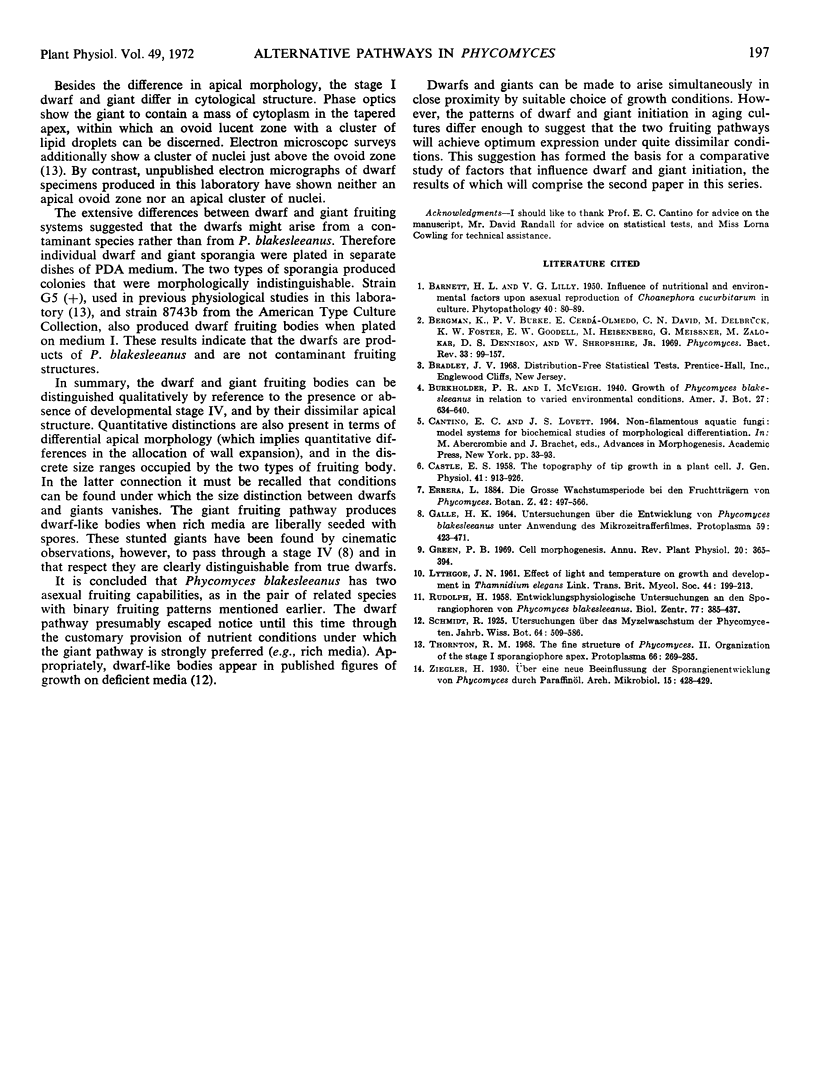Abstract
Developmental distinctions between giant and dwarf fruiting bodies of Phycomyces blakesleeanus (Burgeff) were studied by means of size measurements and growth analyses. Histograms of fruiting body lengths showed a bimodal distribution, with peaks around 0.3 millimeter (dwarfs) and 30 millimeters (giants). Individual cultures contain both giants and dwarfs. Differences between giants and dwarfs appear in the first phase of development; the apex of the giant is tapered, whereas the dwarf apex is dome-shaped. Probable cytological distinctions at this stage are cited in discussion. The dwarfs terminate enlargement upon expansion of the sporangium, thus lacking the subsequent phase of rapid elongation (stage IV) that contributes 90% of the length in the case of giants. It was concluded that P. blakesleeanus maintains two developmental patterns for asexual fruiting, with dwarfs and giants differing radically in growth regulation.
Full text
PDF



Selected References
These references are in PubMed. This may not be the complete list of references from this article.
- Bergman K., Burke P. V., Cerdá-Olmedo E., David C. N., Delbrück M., Foster K. W., Goodell E. W., Heisenberg M., Meissner G., Zalokar M. Phycomyces. Bacteriol Rev. 1969 Mar;33(1):99–157. doi: 10.1128/br.33.1.99-157.1969. [DOI] [PMC free article] [PubMed] [Google Scholar]
- CANTINO E. C., LOVETT J. S. NON-FILAMENTOUS AQUATIC FUNGI: MODEL SYSTEMS FOR BIOCHEMICAL STUDIES OF MORPHOLOGICAL DIFFERENTIATION. Adv Morphog. 1964;4:33–93. doi: 10.1016/b978-1-4831-9950-4.50005-9. [DOI] [PubMed] [Google Scholar]
- CASTLE E. S. The topography of tip growth in a plant cell. J Gen Physiol. 1958 May 20;41(5):913–926. doi: 10.1085/jgp.41.5.913. [DOI] [PMC free article] [PubMed] [Google Scholar]


